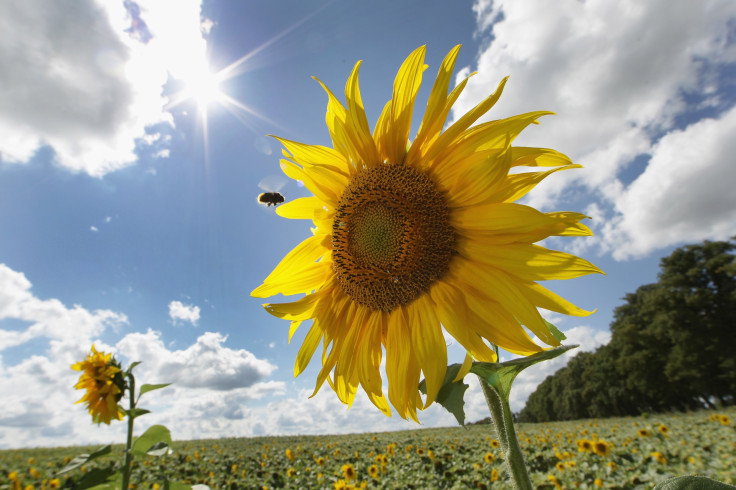Sunflower Mystery: Researchers Decode Why The Flowers Always Face East
KEY POINTS
- The flowerheads of mature sunflowers are always facing east
- Researchers conducted a study by "artificially manipulating" sunflowers' orientation
- They found that facing east attracted more bees and affected their reproduction
Why is it that sunflowers are always facing the east? A team of researchers has now shed more light on the interesting flower behavior.
Sunflowers aren't just lovely to look at, they're also quite interesting. When they're still growing, the heads turn back and forth to follow the sun during the day. But when they mature, the stems become stiff and the flower heads end up facing the east.
In a previous study, researchers from Stacey Harmer's lab at the University of California, Davis (UC Davis), found that young sunflowers track the sun due to their "internal circadian rhythm."
In a study, recently published in New Phytologist, the researchers sought to shed light on mature sunflowers' tendency to face the east.
"We artificially manipulated sunflower capitulum orientation and temperature in both field and controlled conditions and assessed flower physiology, pollinator visits, seed traits and siring success," the researchers wrote.
They found that compared to the flower heads that were facing west, the ones that were facing east were warmer in the morning. According to Harmer, who is the senior author of the current study, this brought "energy benefit" to the bees that were foraging in the morning. Further, the sunlight also lit up the ultraviolet markings that were visible to the bees.
In a video shared by UC Davis, one can see that the flowers facing east had much more pollinating bees compared to those facing west.
"UC Davis research shows that bees prefer to visit east-facing sunflowers (right) than sunflowers that have been turned to face west. East-facing sunflowers are warmer and release pollen earlier to coincide with bee visits," the university said.
The researchers also found that the flowers facing east produced "larger and heavier seeds." And when the team placed portable heaters to warm up the west-facing flowers, they also produced results similar to that of the east-facing flowers, suggesting that the results were related to temperature.
The researchers also tried surrounding male sterile plants with both east- and west-facing flowers. The male plants can produce seeds but not pollen.
"The team found that pollen from the east-facing plants was responsible for more offspring than that from west-facing plants," the researchers wrote. "These results indicate that eastward capitulum orientation helps to control daily rhythms in floral temperature, with direct consequences on the timing of style elongation and pollen emergence, pollinator visitation, and plant fitness."

© Copyright IBTimes 2025. All rights reserved.






















